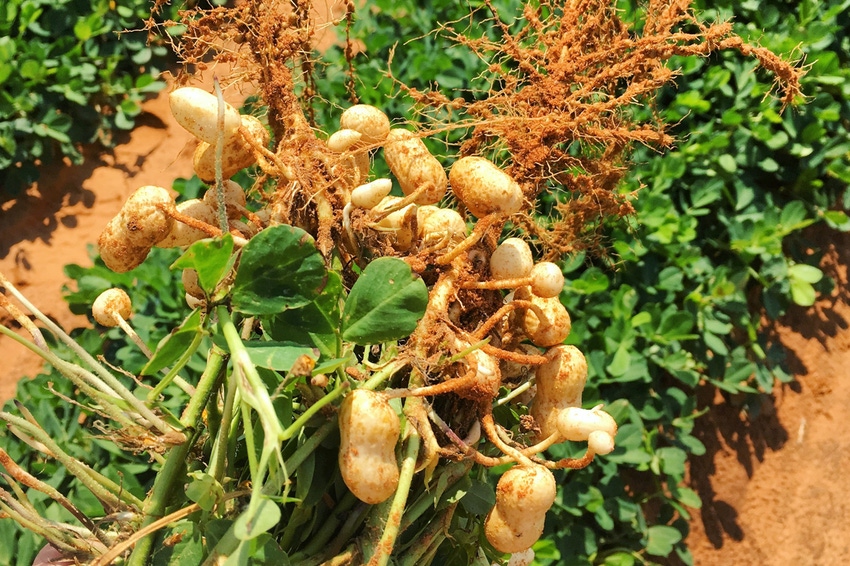
Peanut harvest has started across the state, and harvested acres provided good to great yields for Texas producers, according to a Texas A&M AgriLife Extension Service expert.
Dr. Jason Woodward, AgriLife Extension plant pathologist and statewide peanut specialist, Lubbock, said harvest is underway and progressing rapidly. Initial yield estimates are average to above-average in many cases.
Woodward said good moisture and mild weather in August and September created ideal soil conditions for the crop.
Although Texas peanut production represents a large economic impact for the state, planted acreage decreased compared to last year, Woodward said. Producers planted approximately 200,000 acres in 2017 compared to almost 300,000 acres in 2016.
“Last year was an anomaly,” he said. “There was a large increase in dryland acres because of a federal program that made peanuts a more attractive option for farmers. It’s back to around average this year.”
Woodward said Texas producers did face some disease issues this year, including leaf spot and pod rot in susceptible varieties.
“Leaf spot issues were observed in some fields planted to Valencia and Spanish varieties,” he said. “And very few cases of severe pod rot were experienced in large part due to the efficacy of fungicides that were applied preventively.”
Woodward said the first frost arrived in the region recently and slowed maturity.
See Peanut harvest wraps up, ‘phenomenal’ yields for some growers, http://bit.ly/2zUgfZm
“There was a mild freeze and if damage is observed on the vine, that will dictate when those fields are harvested,” he said. “I expect fields affected would be harvested as quickly as possible.”
Woodward said peanut prices aren’t as good as they could be, but that growers with bumper fields would likely have a good year when they go to market.
But there is value in the crop beyond the market, he said. Many producers utilize peanuts as a rotation crop with cotton.
“Planting peanuts benefits next year’s crop,” he said. “It helps growers with sustainability to rotate with peanuts. They fix nitrogen in the soil and lessen issues with pests. Peanuts are also good from a weed-management standpoint. Growers can treat weeds in peanuts with products that can’t be used in cotton.”
About the Author(s)
You May Also Like




